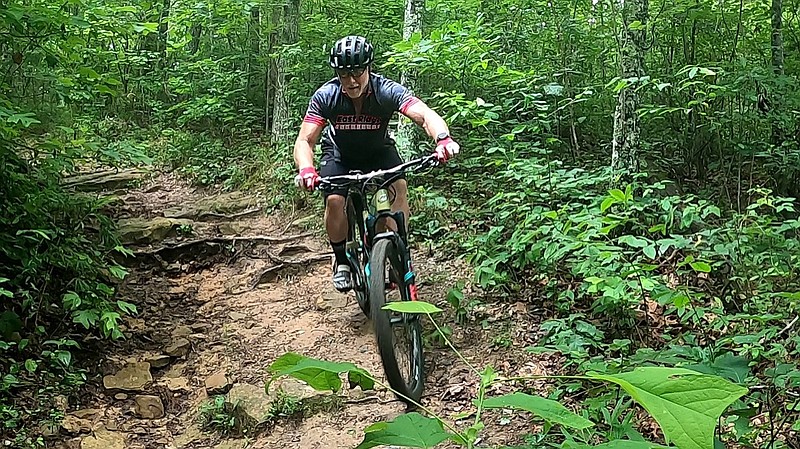When Scott Higgins started mountain biking 30 years ago, no one taught him what to do - he just hopped on his bike and rode.
"Now, things have changed," says Higgins, who started selling mountain bikes at East Ridge Bicycles several years ago and was taken aback by the number of new and intermediate riders who were coming back in the shop beat up with cuts and bruises and broken bikes, even from riding some of Chattanooga's simplest trails. "Trails have changed, bikes have changed, and what I've learned also was that the way you ride a bike changes."
Higgins decided to become a certified mountain biking instructor, and he now offers lessons through his business, Switchback Mountain Biking, and started a YouTube channel called "Newbie Mountain Bike Love."
"There are a lot of techniques and precision things that are really pretty simple, but you've really got to learn them," says Higgins. "If you get the foundation laid right before you develop bad habits, it really helps people progress, as mountain biking really is all about small progressions."
We asked Higgins to share some of the common mistakes he sees beginners make - and how to correct them.
Keep in mind that mountain bikes are different from road bikes and the bikes you rode as a kid. When you're road biking, you're in a static position, either sitting or standing, but mountain biking is very dynamic, and you're always moving your body around on the bike according to the terrain, Higgins says.
Remember that you're new. You don't have to prove anything or do anything that makes you uncomfortable."If you doubt a section of trail, just walk it," he says. Momentum is your friend on the trail when you start encountering features such as rocks and roots, and apprehension will cause you to hit the brakes. This will lead to crashes and frustration and destroy your confidence on the bike, Higgins says. For brand-new mountain bikers, Higgins suggests riding at the Chickamauga Battlefield, the Tennessee Riverwalk, the roads at Enterprise South Nature Park or simply pedaling through your neighborhood. "This will help build up your legs and lungs a bit and help when you hit the trails," he says.
Always be scanning the trail in front of you. "Don't assume that even the most familiar trail wouldn't have changed from the last time you rode it," Higgins says. "There could be a tree down, rocks that may have shifted, recent trail work done or another rider, hiker or animal could be sharing the same trail."
Always ride with your pointer fingers covering the brake levers. Modern mountain bikes have powerful hydraulic brake systems, and gripping with your other three fingers and thumb works just as well as using all four fingers, he says, adding that both brakes should be used at the same time in most situations to give you enough power to slow down or even stop if needed.
Be light in your hands and heavy in your feet, which should be equally weighted on both pedals. "This helps keep your weight low and will give you way more balance," he says.
Keep your elbows out, simulating a push-up position. This gives you more control and stability, which is particularly important while standing going through a technical section, Higgins says.
